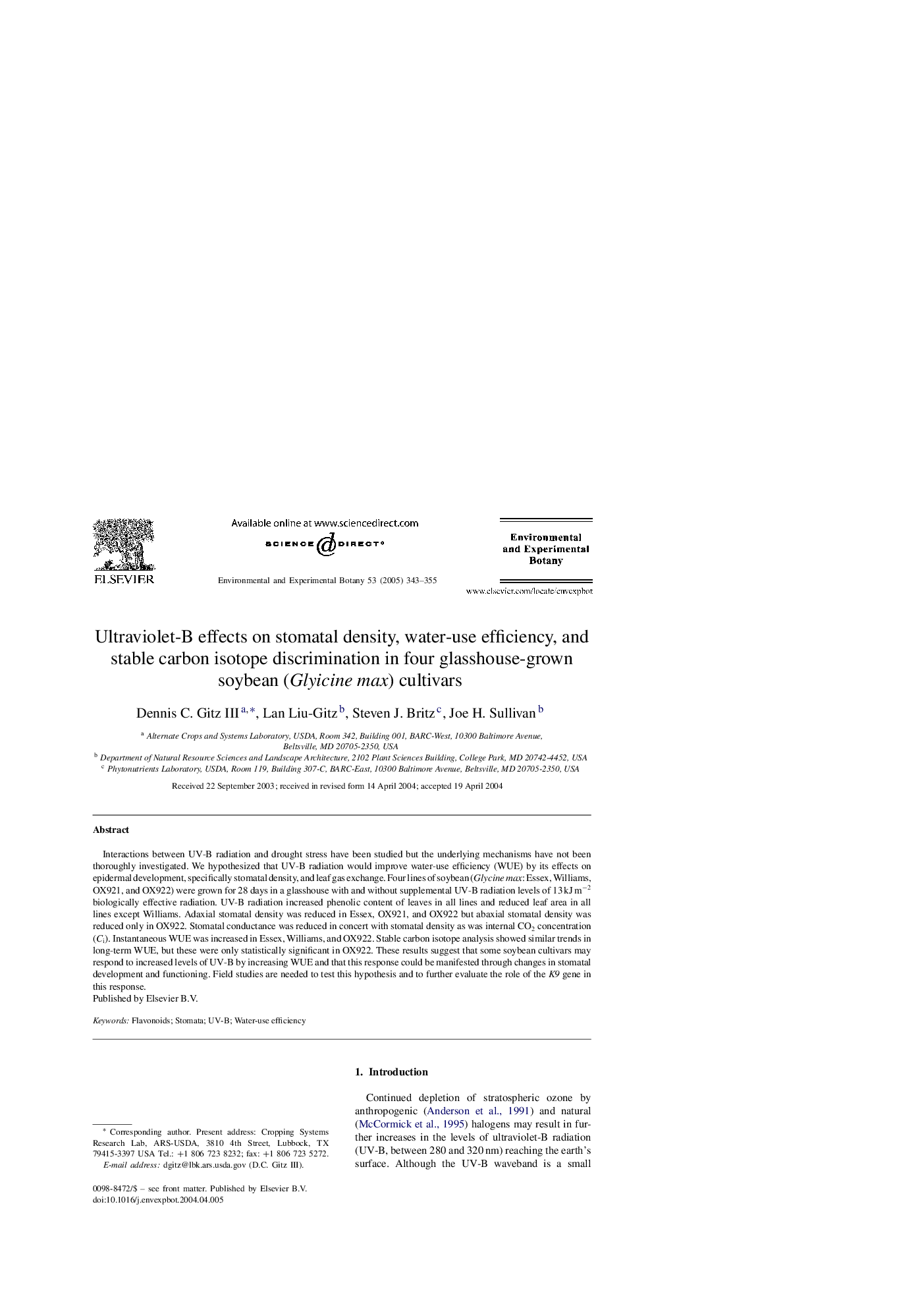| Article ID | Journal | Published Year | Pages | File Type |
|---|---|---|---|---|
| 9485606 | Environmental and Experimental Botany | 2005 | 13 Pages |
Abstract
Interactions between UV-B radiation and drought stress have been studied but the underlying mechanisms have not been thoroughly investigated. We hypothesized that UV-B radiation would improve water-use efficiency (WUE) by its effects on epidermal development, specifically stomatal density, and leaf gas exchange. Four lines of soybean (Glycine max: Essex, Williams, OX921, and OX922) were grown for 28 days in a glasshouse with and without supplemental UV-B radiation levels of 13Â kJÂ mâ2 biologically effective radiation. UV-B radiation increased phenolic content of leaves in all lines and reduced leaf area in all lines except Williams. Adaxial stomatal density was reduced in Essex, OX921, and OX922 but abaxial stomatal density was reduced only in OX922. Stomatal conductance was reduced in concert with stomatal density as was internal CO2 concentration (Ci). Instantaneous WUE was increased in Essex, Williams, and OX922. Stable carbon isotope analysis showed similar trends in long-term WUE, but these were only statistically significant in OX922. These results suggest that some soybean cultivars may respond to increased levels of UV-B by increasing WUE and that this response could be manifested through changes in stomatal development and functioning. Field studies are needed to test this hypothesis and to further evaluate the role of the K9 gene in this response.
Related Topics
Life Sciences
Agricultural and Biological Sciences
Ecology, Evolution, Behavior and Systematics
Authors
Dennis C. III, Lan Liu-Gitz, Steven J. Britz, Joe H. Sullivan,
